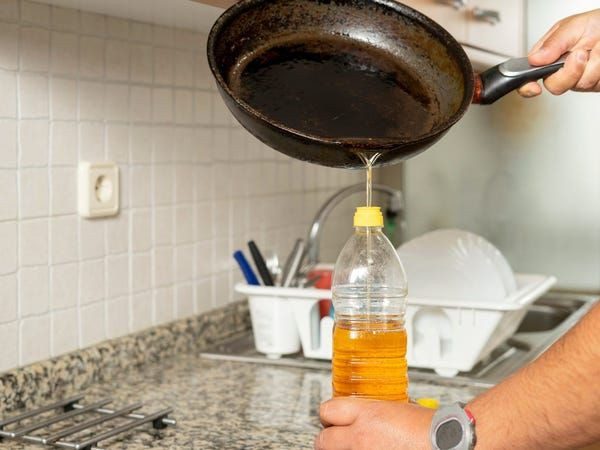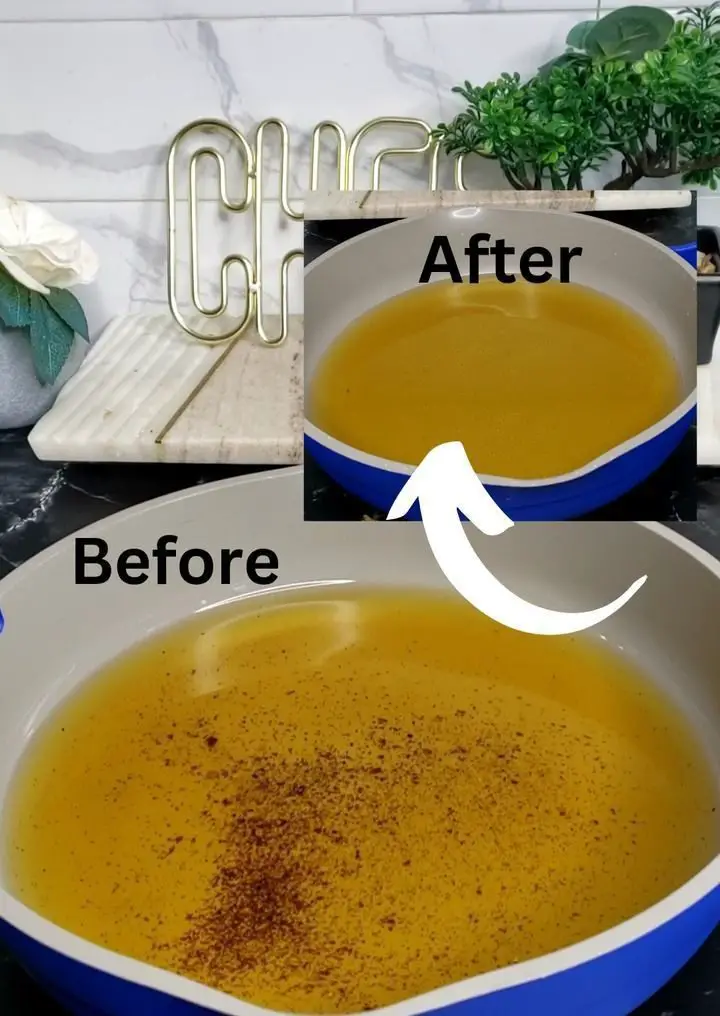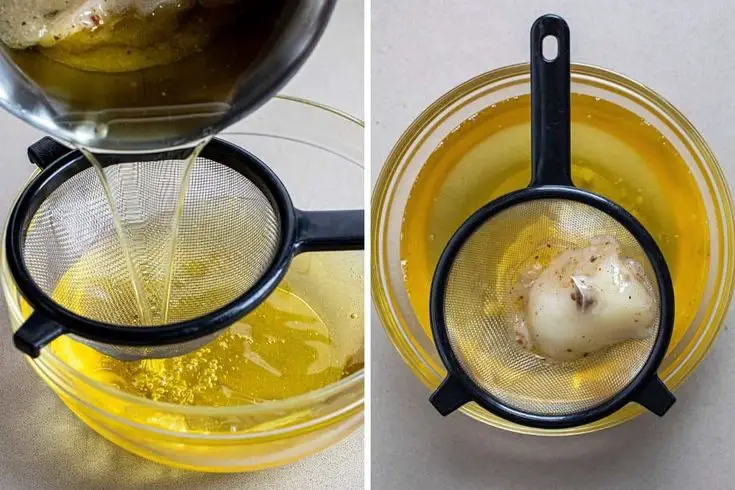Practical Steps to Convert Used Cooking Oil Wastes into Biodiesel; Used cooking oil wastes can be changed into something called Biodiesel. This is a very good thing to do because it helps the environment, when we cook food, we use oil. After we’re done cooking, the oil is not good anymore. It’s called used cooking oil waste. If we just throw it away, it can harm the earth. But if we change it into biodiesel, it can be helpful. Biodiesel is like regular diesel, but it’s made from things like used cooking oil.
To make biodiesel, we need to do a few things. First, we have to collect the used cooking oil waste. This means not throwing it away, but putting it in a special container. Then, we take this used oil to a place where they can change it into biodiesel. They do this by a process called transesterification. It’s a big word, but it means changing one thing into another thing. In this case, they change the used cooking oil waste into biodiesel.
When we have biodiesel, we can use it in many ways. One way is in cars. Instead of using regular diesel made from oil, we can use biodiesel made from used cooking oil waste. This is good because it doesn’t produce as many bad things for the air. It’s better for the environment.
Another good thing about biodiesel is that it’s renewable. This means we can keep making it as long as we have used cooking oil waste. We don’t have to worry about running out like we do with regular diesel made from oil.
In some places, people are already using biodiesel made from used cooking oil waste. They collect the used oil from restaurants and homes. Then, they change it into biodiesel and use it to power cars and other machines. This is a good way to help the environment and reduce waste.
So, converting used cooking oil waste into biodiesel is a smart thing to do. It helps keep the earth clean and reduces the use of regular diesel made from oil. It’s a good idea for the present and the future.
Read Also: How to Install Garbage Disposal
Types of Recyclable Used Cooking Oil Wastes and their Uses

Recyclable Used Cooking Oil Wastes come in different types, and each type can be used in various ways to benefit the environment and society.
1. Vegetable Oil: Vegetable oil is one of the most common types of recyclable used cooking oil wastes. After it has been used for frying or cooking, it can be collected and processed into biodiesel. Biodiesel made from vegetable oil can be used as an alternative fuel for diesel engines in vehicles, reducing dependence on fossil fuels and decreasing greenhouse gas emissions.
2. Animal Fat: Animal fat, often leftover from cooking meat products, is another type of recyclable used cooking oil waste. Similar to vegetable oil, animal fat can undergo the transesterification process to produce biodiesel. Additionally, animal fat can be used in the production of soaps, detergents, and lubricants, providing a sustainable alternative to petroleum-based products.
3. Canola Oil: Canola oil, derived from the canola plant, is commonly used in cooking and frying. Once it has been used, canola oil can be recycled into biodiesel, contributing to the renewable energy sector. Canola oil biodiesel has similar properties to conventional diesel fuel and can be used in existing diesel engines without modification.
4. Olive Oil: Olive oil, a staple in Mediterranean cuisine, can also be recycled after use. Like other types of cooking oil, used olive oil can be converted into biodiesel. Additionally, olive oil has applications in cosmetic and skincare products due to its moisturizing properties, offering a sustainable alternative to synthetic ingredients.
5. Peanut Oil: Peanut oil, often used in frying and Asian cuisines, can be recycled into biodiesel. Biodiesel produced from peanut oil can help reduce carbon emissions and mitigate climate change. Additionally, peanut oil can be repurposed in the production of animal feed or as a raw material for the manufacturing of biodegradable plastics.
Recyclable used cooking oil wastes come in various types, each with its own potential uses and benefits. By recycling these oils into biodiesel and other products, we can promote sustainability, reduce waste, and contribute to a cleaner environment.
How to Convert Used Cooking Oil Wastes into Biodiesel

Converting used cooking oil wastes into biodiesel involves several steps, but it’s a relatively straightforward process. Here’s a simplified explanation of how it’s done:
1. Collection: The first step is to collect the used cooking oil waste. This can be done by households, restaurants, or other food service establishments. The used oil should be stored in a clean, dry container to prevent contamination.
2. Filtering: Before the oil can be converted into biodiesel, it needs to be filtered to remove any solid particles or impurities. This can be done using a simple filtration system or by allowing the oil to settle and then decanting the clear liquid.
3. Chemical Reaction (Transesterification): The main process used to convert used cooking oil into biodiesel is called transesterification. In this process, the oil is mixed with an alcohol (usually methanol) and a catalyst (such as sodium hydroxide or potassium hydroxide). This causes a chemical reaction that separates the oil into biodiesel and glycerin.
4. Separation: After the transesterification reaction is complete, the mixture is allowed to settle. The biodiesel, which is lighter than glycerin, floats to the top and can be skimmed off. The glycerin, which is a byproduct of the reaction, settles at the bottom and can be removed.
5. Washing: The biodiesel is then washed with water to remove any remaining impurities or leftover chemicals from the reaction. This step may need to be repeated several times to ensure the biodiesel is clean and pure.
6. Drying: Once washed, the biodiesel is dried to remove any water that may be present. This can be done by heating the biodiesel or using a drying agent such as silica gel.
7. Testing: Finally, the biodiesel is tested to ensure it meets quality standards and is safe to use. This may involve testing for factors such as acidity, moisture content, and viscosity.
Once these steps are completed, the biodiesel is ready to be used as a renewable fuel source for vehicles, generators, or other diesel-powered equipment. By converting used cooking oil waste into biodiesel, we can reduce waste, lower greenhouse gas emissions, and decrease our dependence on fossil fuels.
The Benefits of Converting Used Cooking Oil Wastes into Biodiesel
Converting used cooking oil wastes into biodiesel offers numerous benefits for both the environment and society:
1. Environmental Protection: By recycling used cooking oil wastes into biodiesel, we reduce the amount of waste that ends up in landfills or is improperly disposed of, thereby minimizing pollution and potential harm to ecosystems.
Additionally, biodiesel burns more cleanly than traditional fossil fuels, resulting in lower emissions of harmful pollutants such as carbon monoxide, particulate matter, and sulfur dioxide, which helps to improve air quality and mitigate climate change.
2. Renewable Energy Source: Biodiesel is a renewable energy source that can be produced from a variety of feedstocks, including used cooking oil wastes. Unlike finite fossil fuels such as petroleum diesel, biodiesel can be continually produced from sustainable sources, reducing our reliance on non-renewable resources and contributing to energy security.
3. Reduction of Greenhouse Gas Emissions: Biodiesel emits fewer greenhouse gases during combustion compared to petroleum diesel, resulting in lower overall carbon dioxide emissions. Additionally, the production of biodiesel from used cooking oil wastes typically requires less energy and generates fewer emissions than the extraction and refining of fossil fuels, further reducing the carbon footprint associated with transportation and energy production.
4. Waste Reduction and Recycling: Converting used cooking oil wastes into biodiesel provides a valuable opportunity to recycle a waste product that would otherwise be discarded. By repurposing this waste stream into a useful and sustainable fuel source, we minimize the environmental impact of waste disposal while simultaneously creating a valuable resource for energy production.
5. Economic Opportunities: Biodiesel production from used cooking oil wastes can create economic opportunities at the local level, including job creation, revenue generation, and investment in green technologies and infrastructure. Additionally, the use of biodiesel can help to diversify energy sources and reduce dependence on imported fossil fuels, which can enhance energy security and promote economic resilience.
6. Community Engagement and Education: Initiatives focused on converting used cooking oil wastes into biodiesel can engage communities in environmental stewardship and sustainability efforts. By raising awareness about the importance of waste reduction, recycling, and renewable energy, these initiatives can empower individuals and organizations to take meaningful action to protect the environment and build more resilient communities.
Converting used cooking oil wastes into biodiesel offers a wide range of environmental, economic, and social benefits. By harnessing this sustainable energy source, we can mitigate climate change, reduce pollution, promote resource conservation, and foster a more sustainable and resilient future for generations to come.
Read Also: Practical Steps to Convert Printer Cartridges Wastes into Plastic Products
The Uses and Benefits of Recycled Biodiesel

Recycled biodiesel, produced from sources like used cooking oil wastes, offers various uses and benefits across different sectors:
1. Transportation Fuel: One of the primary uses of recycled biodiesel is as a renewable alternative fuel for transportation. It can be used in diesel engines without any modifications, serving as a cleaner-burning substitute for traditional petroleum diesel. Recycled biodiesel helps reduce greenhouse gas emissions, air pollutants, and dependence on finite fossil fuels, contributing to cleaner air and mitigating climate change.
2. Energy Generation: Recycled biodiesel can also be used to generate electricity or heat through combustion in power plants or boilers. By utilizing biodiesel for energy generation, we can diversify energy sources, reduce reliance on non-renewable fuels, and lower emissions of harmful pollutants compared to burning fossil fuels.
3. Industrial Applications: Biodiesel derived from recycled sources can find applications in various industrial sectors. It can be used as a lubricant in machinery and equipment, providing lubrication properties while being environmentally friendly. Additionally, biodiesel can serve as a solvent in industrial processes or as a raw material for the production of biodegradable plastics and other bio-based products, contributing to the circular economy.
4. Agricultural Sector: Recycled biodiesel can benefit the agricultural sector by providing a sustainable fuel source for farming equipment and vehicles. Farmers can use biodiesel to power tractors, harvesters, and other machinery, reducing operating costs and environmental impact. Additionally, the use of biodiesel can support rural economies by creating local markets for agricultural byproducts such as used cooking oil wastes.
5. Maritime and Aviation Industries: Biodiesel can also be used as a renewable fuel alternative in maritime vessels and aircraft, offering a cleaner-burning option compared to traditional marine diesel or jet fuel. By transitioning to biodiesel, the maritime and aviation industries can reduce emissions of sulfur oxides, nitrogen oxides, and particulate matter, improving air quality and environmental sustainability.
6. Waste Management: The production and use of recycled biodiesel contribute to waste management efforts by repurposing organic waste materials such as used cooking oil wastes. By recycling these waste streams into biodiesel, we can divert them from landfills, reduce pollution, and promote a circular economy approach to resource management.
7. Community and Economic Development: The utilization of recycled biodiesel can stimulate local economies through job creation, investment in green technologies, and the establishment of sustainable supply chains. Community-based biodiesel production initiatives can empower individuals and organizations to take ownership of their energy needs, promote energy independence, and build resilience against external energy shocks.
Overall, recycled biodiesel offers a versatile and sustainable solution for reducing environmental impact, promoting energy security, and fostering economic development across various sectors. By harnessing the potential of recycled biodiesel, we can work towards a cleaner, greener, and more sustainable future for generations to come.
The Challenges of Converting Used Cooking Oil Wastes into Biodiesel and their Solutions
Converting used cooking oil wastes into biodiesel presents several challenges, but with careful planning and implementation, these challenges can be overcome. Here are some common challenges and their potential solutions:
1. Contamination and Impurities: Used cooking oil wastes may contain contaminants such as water, food particles, and other substances that can interfere with the biodiesel production process.
Solution: Implementing effective filtration and pre-treatment methods can help remove impurities from the used cooking oil before the biodiesel production process begins. This can involve filtering the oil to remove solid particles and moisture, as well as using chemical additives to neutralize any acidic components.
2. Variability of Feedstock Quality: The quality and composition of used cooking oil wastes can vary depending on factors such as cooking methods, food types, and storage conditions.
Solution: Standardizing collection and storage practices for used cooking oil wastes can help ensure consistency in feedstock quality. Additionally, conducting regular testing and analysis of the feedstock can help identify any variations and adjust the biodiesel production process accordingly.
3. Chemical Reactions and Processing Complexity: The transesterification process used to convert used cooking oil into biodiesel involves multiple chemical reactions and processing steps, which can be complex and require careful monitoring.
Solution: Employing skilled technicians and utilizing automated or semi-automated production systems can help streamline the biodiesel production process and ensure consistent quality. Additionally, investing in research and development to optimize reaction conditions and catalyst formulations can improve efficiency and yield.
4. Costs and Economic Viability: Establishing and operating a biodiesel production facility can involve significant upfront costs, including equipment, infrastructure, and raw materials. Additionally, fluctuations in feedstock prices and market demand can impact the economic viability of biodiesel production.
Solution: Seeking financial incentives, grants, or subsidies from government agencies or private organizations can help offset initial investment costs and make biodiesel production more economically feasible. Collaborating with local businesses, governments, and community organizations to establish partnerships and secure long-term feedstock supply agreements can also help stabilize production costs and ensure market demand.
5. Regulatory Compliance and Certification: Biodiesel production is subject to regulatory requirements and certification standards to ensure product quality, safety, and environmental sustainability. Meeting these regulatory obligations can add complexity and administrative burden to the biodiesel production process.
Solution: Investing in compliance management systems and hiring qualified regulatory experts can help navigate the complex regulatory landscape and ensure adherence to applicable laws and standards. Additionally, obtaining third-party certifications such as the ASTM D6751 or European EN 14214 standards can enhance market acceptance and credibility for biodiesel products.
Frequently Asked Questions (FAQs) About How to Convert Used Cooking Oil Wastes into Biodiesel
1. Q: What is biodiesel?
A: Biodiesel is a renewable fuel made from organic sources such as vegetable oils, animal fats, or used cooking oil wastes. It can be used as a cleaner-burning alternative to petroleum diesel in diesel engines.
2. Q: How is used cooking oil waste collected for biodiesel production?
A: Used cooking oil waste can be collected from households, restaurants, food service establishments, or commercial kitchens using specialized collection containers or collection services.
3. Q: What is the process of converting used cooking oil wastes into biodiesel?
A: The process, known as transesterification, involves mixing the used cooking oil waste with an alcohol (usually methanol) and a catalyst (such as sodium hydroxide or potassium hydroxide). This chemical reaction separates the oil into biodiesel and glycerin.
4. Q: Can any type of used cooking oil be converted into biodiesel?
A: Yes, various types of used cooking oil wastes, including vegetable oil, animal fat, canola oil, olive oil, and peanut oil, can be converted into biodiesel through the transesterification process.
5. Q: Is it safe to use biodiesel produced from used cooking oil wastes?
A: Yes, biodiesel produced from used cooking oil wastes is safe to use as a fuel for diesel engines. It meets quality standards and regulatory requirements for biodiesel fuel.
6. Q: What are the benefits of converting used cooking oil wastes into biodiesel?
A: Converting used cooking oil wastes into biodiesel helps reduce waste, lower greenhouse gas emissions, promote renewable energy, and decrease dependence on fossil fuels.
7. Q: Can biodiesel produced from used cooking oil wastes be used in existing diesel engines?
A: Yes, biodiesel produced from used cooking oil wastes can be used in existing diesel engines without any modifications. It has similar properties to conventional diesel fuel.
8. Q: Where can I find more information about converting used cooking oil wastes into biodiesel?
A: You can find more information from government agencies, environmental organizations, research institutions, and biodiesel production facilities. Additionally, online resources, publications, and industry conferences may provide valuable insights into biodiesel production processes and best practices.
Read Also: Ocicat Cat (Felis catus) Description and Complete Care Guide
